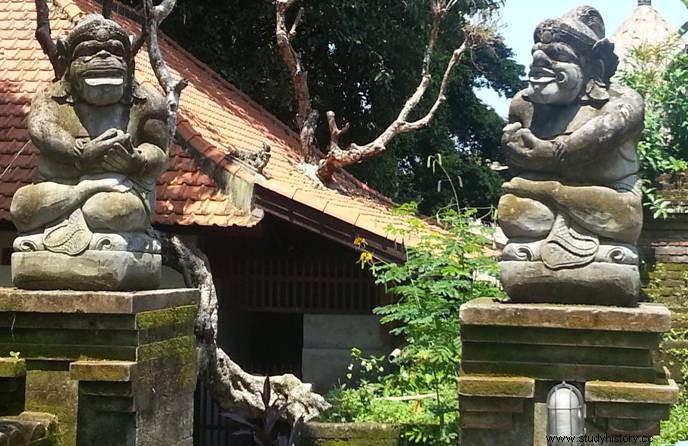
The Plaosan Buddhist Temple is also a temple group in which the ruins of temples are located. This temple is only one kilometer to the north-west of the Parambanan temple. This place is called Bugisan village. It is a town-like village in the Klaten Regency of Central Java's Parambanan district with rows of pucca shops. A river called Dengok flows through a distance of about 200 meters near the temple. There are paddy fields around the temple. Banana and coconut clumps are visible everywhere.
The Plaosan Buddhist Temple Complex is spread over an area of 2000 square meters and is situated just 148 meters above sea level. The Plaosan Buddhist Temple Complex is spread over an area of 2000 square meters and is situated just 148 meters above sea level. Its construction period also dates back to the ninth century AD. It is believed that this temple was built by Princess Kahlunnan or Pramodvardhini, who was the daughter of Emperor-Unga or Samratunga of the Shailendra dynasty. This princess was married to Rakai Pictan, who was the ruler of the Mataram dynasty (Sanjay dynasty) of Central Java around AD 850.
There are two types of Buddhist temples in this temple complex - Plaosan Lor and Plaosan Kidul. These two types of temples are separated by a road. Plaosan Lor lies to the north and Plaosan Kidul to the south.
There are 174 small buildings in the Plaosan temple complex. Of these, 116 are stupas and 58 are chaityas. Inscriptions are engraved on many buildings. Two of these inscriptions indicate that the temple was built as a gift by Rakai Pikatan. The dates of these inscriptions are between 825-850 AD while the Parambanan temple dates to 856 AD. Both these temples were built by the same king but there is a substantial difference in their craft. The Parambanan temples were built in a purely Hindu architectural style, while the Plaosan temples were built in the traditional Buddhist style.
There are two main temples in Plaosan Lor which can be called twin temples. The gatekeepers are sitting at the entrance of both the temples. Their open part is called a mandapa. These temples are divided into high and low levels and are divided into three chambers. There were many statues in the lower level chambers, but at present there is only one statue of a Bodhisattva on either side of each chamber. The central statue of the main base has disappeared. It was a bronze Buddha statue with stone Bodhisattva statues on either side. Historians estimate that there must have been a total of nine statues in each of the main temples, of which 6 were bodhisattva stone statues and 3 bronze Buddha statues. Thus there must have been a total of 18 idols in both the twin temples. One of the chambers of these twin temples also has a statue of a Khmer king which may have been excavated later. This statue can be recognized by its crown.
